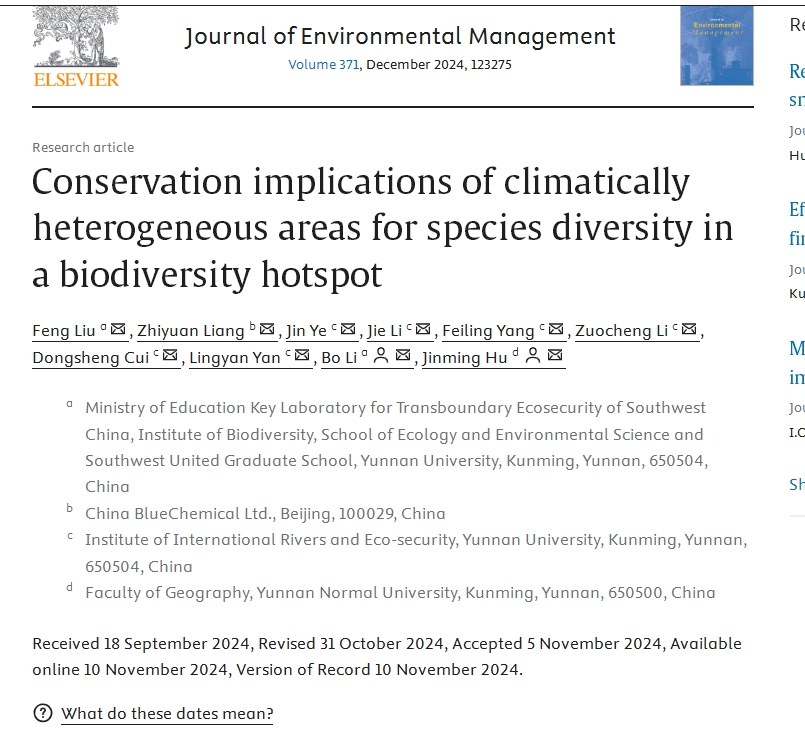博文
云师大地理学部胡金明教授在top期刊《 Journal of Environmental Management》发表成果
||
2024年11月10日,Elsevier 旗下top期刊《Journal of Environmental Management》在线发表了云南师范大学地理学部胡金明教授团队最新研究成果《Conservation implications of climatically heterogeneous areas for species diversity in a biodiversity hotspot》。第一作者为云南大学生态与环境科学学院与西南联合研究生院李波教授和云南师范大学地理学部胡金明教授为共同通讯作者。
https://www.sciencedirect.com/science/article/abs/pii/S0301479724032614

Abstract
Climate heterogeneity is commonly associated with exceptionally high species richness, thus bolstering ecological resilience and maximizing long-term biodiversity benefits. However, few studies have been conducted to examine the implications of climatically heterogeneous areas (CHAs) for effective biodiversity conservation. In this study, we collected occurrence records of birds and vascular plants in a biodiversity hotspot in Yunnan, China, and delineated corresponding CHAs. The conservation effectiveness of CHAs for species diversity was demonstrated through a comparison of climate- and species-based prioritization schemes, incorporating surrogacy analysis and species representation. Despite significant spatial discrepancies with species-based conservation prioritization, we found that a prioritization scheme based on CHAs would effectively conserve more than 86.3% of Yunnan's birds and vascular plant species, regardless of spatial scale. The coverage of protected areas for priority conservation areas of two prioritization schemes is relatively low (<14.4%). Therefore, our study also underscores the significant conservation gaps for birds and vascular plants in Yunnan revealed by both prioritization schemes, with the latter emphasizing the crucial roles of mountainous regions, gorges, and particularly dry valleys along the Jinsha River and Yuanjiang River. These conservation gaps provide complementary and previously hidden potential conservation areas for the preservation of species diversity in Yunnan. Overall, our study demonstrates that incorporating CHAs into conservation prioritization represents a smart and effective approach for safeguarding species diversity, serving as a paradigm for integrating abiotic factors into conservation planning and providing valuable strategies to conserve species diversity in biodiversity hotspots.
https://blog.sciencenet.cn/blog-454141-1460461.html
上一篇:云师大物电学院张伟斌、朱挺在硅酸盐top期刊《Ceramics International》发表最新研究成果
下一篇:云师大化工学院龚行教授课题组在《Sensors and Actuators B: Chemical》发表最新研究成果